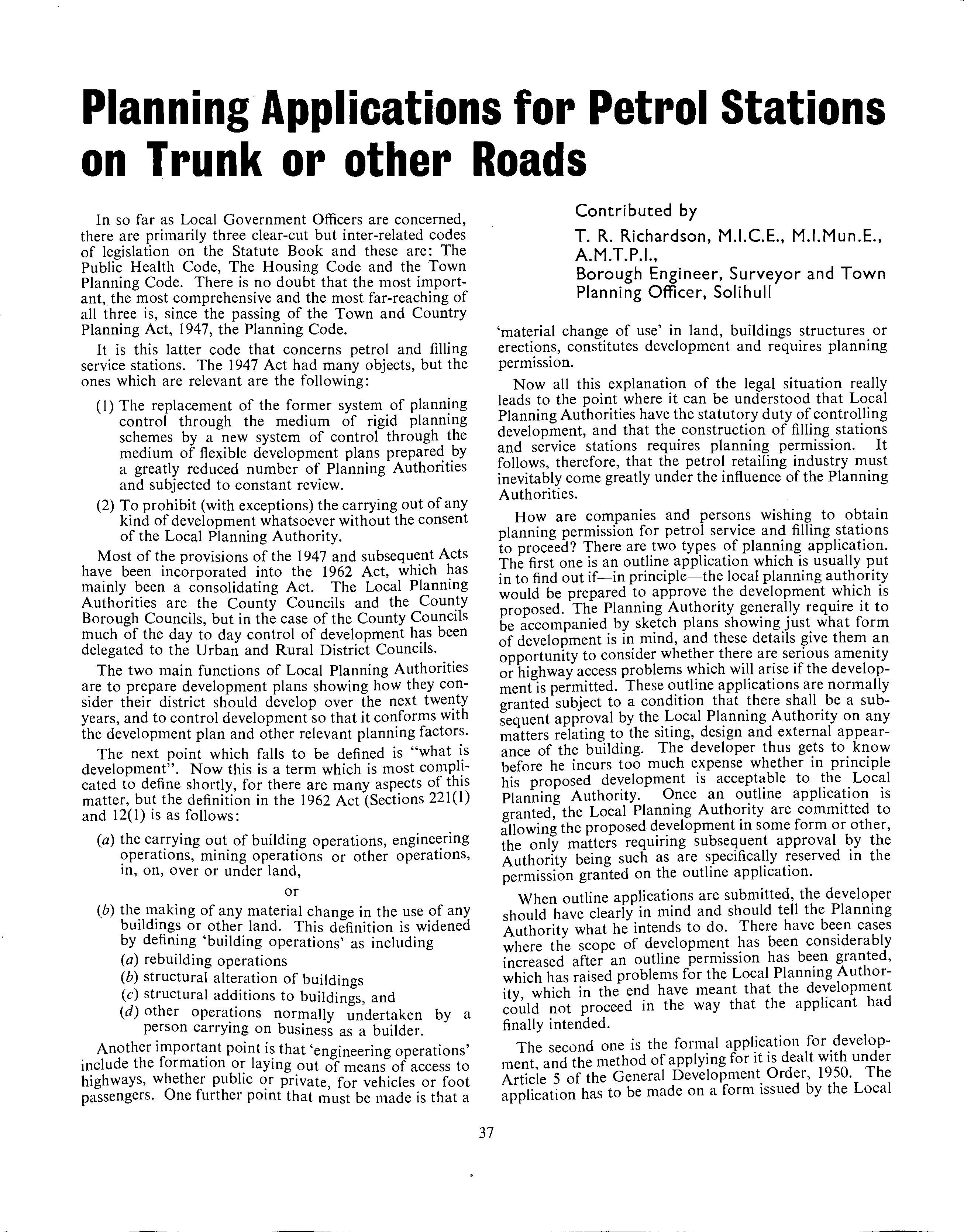
4 minute read
THE DISASTER AT FEYZIN
from The Bulletin – April 1966
by apeauk
This report on the disaster, made by Lieut.-Cmdr. J. H. Fordham, Chief Officer of the Kent Fire Brigade, is reproduced with the permission of Fire International
In the early morning of Tuesday, January 4th, 1966, the French Fire Services were hit by their greatest tragedy since the war. Within two hours of a call to the Feyzin Refinery being received by the brigades at Lyons and Vienne, eight fire-fighters, including the Chief of Vienne, were dead and 40 lay seriously injured in hospitals. At least three other people were killed and 20 more injured.
Advertisement
At once the area was declared a disaster area. A pre-planned catastrophe procedure was put into operation and · reinforcements of fire-fighters from the whole of the Rhone province and from Paris and Marseilles, hundreds of miles away, were rushing to the striken area.
The £15 million Feyzin Refinery, commissioned only 18 months ago, covers an area of 300 acres, employs 250 men and can handle 2 million tons of crude oil a year. The refinery is in the process of being extended to become the largest plant in Europe and the second or third largest in the world.
The tragedy happened after what started as a routine operation. A refinery worker, a laboratory technician and a refinery fireman went to a large propane storage tank to draw off a quantity of propane for test purposes.
Although during these operations leaks sometimes occur, it appears that on that morning there was a larger leak. The three men tried to shut the valve, but this was frozen. Badly burned about the face and hands by the leaking gas and unable to close the valve, the men rushed for help. The escaping gas drifted towards Route Nationale 7, the most important motorway in France. All traffic on the motorway had to be halted.
There is a dispute over what happened next. The gas cloud which now covered a large part of the refinery and the motorway was ignited and flashed back to its source, the leak in the propane tank. It is believed that either a vehicle or its occupants on the motorway (or on an adjacent road) provided a source of ignition, or alternatively, that static electricity was to blame. The result was that the gas under the propane tank, now burning, started to 'cook' the sphere, one of eight within a close area.
At this stage, the fire brigades in Lyons, 6 miles away, and Vienne, 11 miles away, were informed and responded with normal first attendance for the refinery.
Shortly afterwards, the first of a series of explosions occurred. Unable to approach the blazing tank, whose drencher system was already out of action, firemen got as close as possible to apply cooling jets. At approximately 8.40 a.m. there was another explosion-an explosion which wiped out the majorityoffire-fighters and appliances already on the scene.
It was about this time that the pre-planned catastrophe procedure was put into action on the orders of the Prefect of the Rhone Department and 2,000 people from the surrounding area were evacuated. As part of the catastrophe procedure, hospitals and doctors in the area were alerted to receive a large number of casualties and a fleet of ambulances took the dead and injured to Lyons.
A chain reaction caused four other spheres to explode at short intervals and set fire to one of a large number of petrol tanks and damaged other crude oil tanks. The fact that a strong northerly wind blew the flames towards wasteland and away from the main part of the refinery probably averted an even greater disaster.
The remaining uninjured firemen and the reinforcements which had arrived quickly extinguished the fire in the petrol tank with foam jets. For about six hours they had to confine fire-fighting operations to cooling down the whole of the unaffected storage area. Because of the danger of further explosion, fire-fighters carried out these operations with radial branches from the motorway.
About 34 hours after the first alarm firemen were again faced with a hazardous situation wh~n two large raised propane tanks, lying horizontally, caught fire. This outbreak caused the whole area to be re-evacuated. These tanks did not explode because the fire-fighters were able to fix pipes beneath them to draw away the gas so that the flames did not heat the tanks.
An abortive attempt was made by two Catalina flying boats of the French Air Force to help the fire-fighters on the ground, but these could not approach the area because of the height of the flames.
T~e co~rage a~d devotion to duty of the fire-fighters received high praise from ministerial and other sources. The Mayor of Feyzin, Monsieur Ramillier an employee of. the ;.efin~ry, who was himself injured in 'the explosion, said: Their courage was extraordinary, I saw th~m approaching as near as possible to the container with their branches. When the blast threw me to the ground I saw their silhouettes whipped by the immense flames"·
Monsieur Michel Maurice-Bokanowski Minister of Industry, commented, "All those involved Jn the incident were magnificent".
Two of the firemen killed were recruits attending th~ir first fire. To add to the difficulties of the Lyons Fife Brigad~, on th~ first day of the refinery incident it had to deal with a maJor outbreak requiring 20 jets.
Finan~ial help f ?r the dependants of the victims began to flow m almost.11!Jmediately. President de Gaulle per-sona}ly gave 5 million old francs and the company controllmg the refinery gave 4 million old francs to the fire-fighters of Lyons and Vienne.
32










